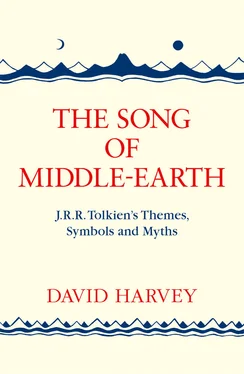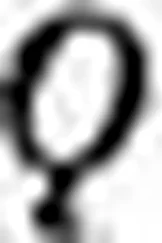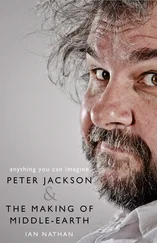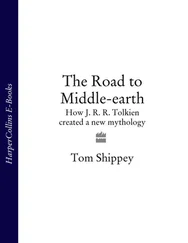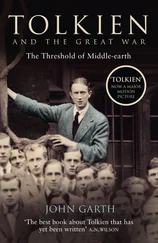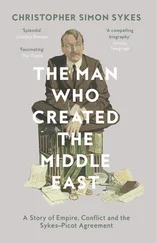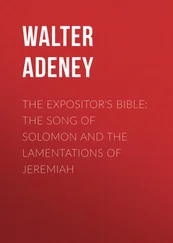Graves’ study of the Greek myths is as vast as some of the epics that he studies. His examination is not merely of the myths, or their religious background, but their significance within the political and religious systems that existed in Europe before the advent of the Aryan invaders. Yet his sources are the great writers of the classical period: Homer, Herodotus, Plato, Aeschylus, Plutarch, Ovid, Virgil among many others. In effect Graves must go deep into the stories, past the peripheral words of the tales to discover their true meaning, context and significance.
Graves’ approach to the Greek myths may lead him to one definition. His subject matter and his mythology are the best documented in existence. In settling upon his particular definition Graves is able to approach his subject from that point of view.
But despite the apparent sophistication of ‘true’ myth, and the exclusion of those other tales that may be regarded as ‘mythic’, Graves could not deny that all the mythic tales both of the ‘true’ or other forms of myth deal with liminal phenomena. They are tales told or conceived at a time or in a location that is apart from the here and now reality. ‘Myths relate’ by direct language or by symbols how a particular state of affairs came to be, or ‘how one state of affairs became another’. 3
Myths tell how the world came to be out of chaos, and how an unpeopled world became populated. They tell how those who were immortal forsook their immortality or departed the real world for some other region where immortals dwell. Myths tell or explain how the seasons came, the cause of rain, the origin of particular plants and how a united mankind in a Golden Age became a plurality of nations. There is, of course, religious significance in myth. The gods or supernatural beings of myth were the object of worship. If we see myth as being an explanation of natural phenomena under the control of supernatural beings, a myth then embodies a desire to control nature for the advantage of the tribe, group or society.
However, the field of myth and the purpose and the definition of myth has been a battleground for scholars for many years. Mircea Eliade says:
Myth narrates a sacred history; it relates an event that took place in primordial Time, the fabled time of the ‘beginnings’. [It] tells how, through the deeds of Supernatural Beings, a reality came into existence, be it the whole of reality, the Cosmos, or only a fragment of reality – an island, a species of plant, a particular kind of human behavior, an institution. Myth, then, is always an account of a ‘creation’; it relates how something was produced, began to be … In short, myths describe the various and sometimes dramatic breakthroughs of the sacred (or the ‘supernatural’) into the World … Furthermore, it is as a result of the intervention of Supernatural Beings that man himself is what he is today, a mortal, sexed, and cultural being. 4
Eliade himself has been the subject of controversy and his views have been subjected to vitriolic academic denigration or paeans of critical praise. The difficulty is that ‘there is no agreement as to what the myth and ritual pattern actually is’. 5Each scholar who has established expertise in the field inevitably comes into conflict with others – Frankfort cannot tolerate the views of Frazer; Rose savagely attacks Graves and Graves gores Carl Jung. And if this academic carnage were not enough, there is no agreement as to the meaning of myth. Whalley describes it as a direct metaphysical statement beyond science; Watts believes that the purpose, source and end of myth is revelation; Wheelwright opines that myth is a set of depth meanings of per-during significance within a widely shared perspective; whereas Frazer says that they are mistaken explanations of phenomena founded on ignorance and misapprehension – they are always false for if they were true they would cease to be myths. 6
Yet perhaps K. K. Ruthven, although not resolving the problem, casts sufficient light upon it to clarify the difficulty.
We have no direct experience of myth as such, but only of particular myths: and these, we discover, are obscure in origin, protean in form and ambiguous in meaning. Seemingly immune to rational explication, they nevertheless stimulate rational enquiry, which accounts for the diversity of conflicting explanations, none of which is ever comprehensive enough to explain myth away. 7
Myth and legend have been often equated or compared. They have similarities and differences. Purists would say that myths and legends are quite distinct, because myths have as their purpose the explanation of things and the embodiment of a religious heritage, whereas legends are folk or national tales of the heroes or outstanding persons of a nation, state or tribe.
Legends are stories embedded in some elements of fact and history, however tenuous, concerning heroes and events. In my opinion legends and myths have a point of connection; like overlapping circles they have in common a part of each other, but also may occupy separate areas. Fancy and exaggeration may elevate the hero to a superhuman status; he may have a god for a parent or an ancestor and may, as a result, receive divine aid or suffer divine disfavour. In common with myths, legends were handed down through generations and enriched the lives of their listeners, and their values and lessons were a link with a heroic past and often divine wisdom. Legends became the heroic or traditional stories that were modified or embellished, but although there may have been divergence in the detail of the tales, such modifications were used for the purpose of explanation or clarification. Always the basic theme remained the same. Myths, legends and, to a degree, fable (which was obviously untrue and allegorical only, whereas myth and legend are represented as ‘true’) all underwent embellishment, addition or modification in the telling process. Yet both myth and legend arise from the nature of man and his desire to know the answers to the same universal questions, demanding to understand the same universal truths. Perhaps it is because myth is so elemental and basic that it is hard to settle upon a fundamental definition that will satisfy all. But if myth cannot be satisfactorily defined, its use, function and purpose merit a study so that we may understand myth within the context of the human experience.
Many views have been put forward to explain the function of myth. These seem to differ in the same way as the attempts at definition. Thus we have Frazer stating that the function of myth is a primitive fumbling attempt to explain the world of nature. According to Müller, myths are the production of poetical fantasy from prehistoric times, misunderstood by succeeding ages, and to Durkheim, a repository of allegorical instruction to shape the individual to his group. Carl Jung advocates the psycho-analytical view that myth is a group dream, symptomatic of archetypal urges within the depths of the human psyche, and the view of the Church or organised religion is that myth is God’s revelation to His children.
Whatever differences there may be in the sophistication of the opinions, they all come down to the same function in the end – myths answer the awkward questions that seem to be asked, primarily by children, ‘Who made the world?’ to ‘How will it end?’ According to Graves, myths justify an existing social system and account for traditional rites and customs. Thus myth may explain why I am here and where I am going and in addition it may explain why things around me are as they appear to be.
The word ‘myth’ that we use derives from the Greek mythos which means ‘word’ or ‘spoken word’ or ‘speech’. Logos originally had this meaning and the use of both words together meant, and still means, ‘stories’ although in Greek context such stories included the pantheon of Olympus, the activities of the heroes and the allegorical folktales of Aesop. Even to the Greeks, myths were the subject of debate. In the fifth century BC the word mythos is applied to those stories for which the truth is not vouched. Pindar considered mythos to be decked out with lies in excess of the true story. 8Thucydides commented that some historians incorporated material into their work which got to the stage of being mythodes. 9Plato described the mythoi as being essentially untrue although there may be elements of truth in them. Thus Thucydides doubts the truth of myths whereas Plato views them as a vehicle for imparting a truth, rather like a parable. Plato, in fact, draws upon mythological elements and characters to explain why certain skills may be peculiar to certain members of society, whilst a sense of justice is common to all. Indeed, at the end of the Georgics, Phaedo and the Republic, he recounts what happens to the soul after death. The reason for this account is to evidence a lesson and to lead the reader to a resultant behavioural practice. The story draws on traditional religious symbols and upon traditional religious beliefs. With the passage of time these traditional beliefs became lost, leaving the stories as symbolic vehicles. Thus there is a very strong body of opinion which holds that beneath the apparent meaning of a myth lies a deeper ‘real’ meaning. 10Certainly myth has within it the richest of symbols and was the language of the ancient mystery religions with their highly symbolic rites. Indeed, it has been suggested that all the sacred books of the world are written in a symbolic language, and certainly an example must be The Revelation of St John the Divine.
Читать дальше
